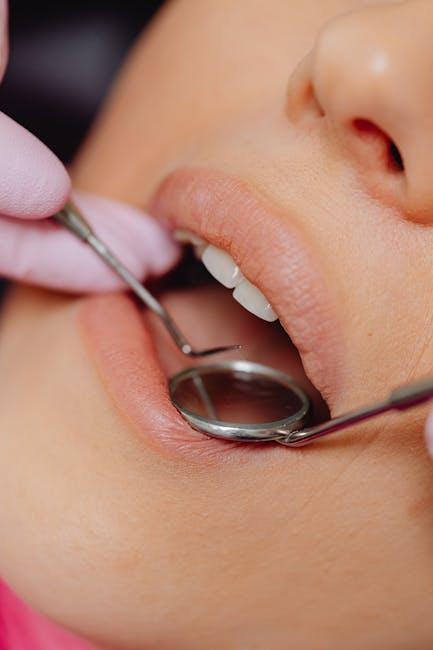
Emergency Dental Visits Take A Bite Out Of Everyone’s Wallets – Texas A&M
When a dental emergency strikes, it not only causes discomfort and pain but can also lead to unexpected and sometimes hefty expenses. Emergency dental visits often come with high costs that many individuals are not prepared for, hitting wallets hard. Based on research and insights from Texas A&M, this article explores why emergency dental visits are so expensive, how these costs affect patients, and practical tips to manage and potentially minimize these expenses.
Understanding Emergency Dental Visits
An emergency dental visit typically occurs when you encounter severe pain, trauma, or sudden dental issues that cannot wait for a regular appointment. These can include:
- Severe toothache or infection
- Broken, cracked, or knocked-out teeth
- Abscesses causing swelling
- Lost dental restorations like crowns or fillings
- Soft tissue injuries inside the mouth
Unlike scheduled visits, emergency dental care requires immediate attention and often involves more complex procedures, which can increase the overall treatment cost.
Why Do Emergency Dental Visits Cost So Much?
Several factors contribute to the high cost of emergency dental care, as highlighted by studies conducted at Texas A&M and throughout Texas:
1. Urgent Nature of Treatment
Emergency dental services often require clinics to allocate resources and personnel outside of regular business hours, including nights and weekends. This urgent, on-demand care results in higher fees compared to routine check-ups.
2. Complex Procedures and Materials
Many emergencies involve advanced procedures such as root canals, extractions, or rebuilding fractured teeth, all of which require costly equipment, materials, and expert skills.
3. Limited Insurance Coverage
Not all dental insurance plans fully cover emergency treatment, and some may classify certain procedures as elective or out-of-network, leading to higher out-of-pocket costs.
4. Additional Diagnostic Tests
X-rays, CT scans, or other diagnostic imaging may be necessary for effective treatment of emergencies, adding to the total bill.
Average Costs of Common Emergency Dental Procedures in Texas
| Procedure | Average Cost (USD) | Notes |
|---|---|---|
| Emergency Examination | $75 – $150 | Initial consultation and pain assessment |
| Root Canal Therapy | $700 – $1,200 | Often needed for infection or severe decay |
| Tooth Extraction | $150 – $400 | Simple extractions are less costly than surgical |
| Dental Crown Replacement | $800 – $1,500 | Restores damaged or fractured tooth |
| Composite Filling | $150 – $300 | Treats cavities or minor cracks during emergency |
The Financial Impact: Texas A&M Research Insights
Research from Texas A&M’s Health Science Center demonstrates that emergency dental visits significantly impact household finances, particularly for those without adequate insurance or limited access to affordable dental care.
- Increased Medical Debt: Unexpected dental bills often lead to increased medical debt or delayed treatment.
- Reduced Access to Future Care: High emergency costs can discourage patients from seeking preventive care, creating a cycle of costly emergencies.
- Population Impact: Texas sees higher rates of dental emergencies in underserved rural communities, emphasizing a need for expanded affordable care.
Practical Tips to Manage Emergency Dental Costs
While you can’t always prevent dental emergencies, managing costs and preparing financially can reduce the shock to your budget. Here are practical tips recommended by Texas A&M dental experts:
1. Maintain Regular Dental Checkups
Routine visits help catch issues early and reduce the chances of emergency care.
2. Understand Your Dental Insurance
Check what emergency procedures your plan covers and consider supplemental insurance plans if necessary.
3. Use Local Dental Schools
Dental schools, including Texas A&M’s College of Dentistry, often offer emergency services at reduced rates performed by supervised students.
4. Negotiate Payment Plans
Many dental offices offer financing or payment plans to spread out the cost of emergency treatments.
5. Keep a Dental Emergency Fund
Setting aside even a small amount monthly can help build a buffer for unexpected dental expenses.
First-Hand Experience: A Patient’s Perspective
Jane, a Texas resident, shared her experience:
“Last year, I had a sudden tooth infection that required an emergency visit. The bill was much higher than I expected—over $1,200. I wish I had maintained my dental check-ups better and known more about insurance coverage. Thankfully, the dental school nearby helped me save nearly 40%.”
Stories like Jane’s highlight the importance of both preventive care and exploring affordable options before emergencies arise.
The Benefits of Prompt Emergency Dental Care
Despite the financial bite, prompt emergency dental care offers several benefits:
- Pain Relief: Immediate intervention alleviates intense pain, improving quality of life.
- Prevention of Further Damage: Early treatment helps avoid complicated and costly future problems.
- Preservation of Teeth: Timely care can save teeth that might otherwise be lost.
Conclusion: Preparing for Dental Emergencies Is Key
Emergency dental visits can undoubtedly take a significant bite out of your wallet, as shown by Texas A&M’s research and the rising costs of urgent dental care in Texas. However, by understanding the causes behind these costs, maintaining regular dental health routines, improving insurance literacy, and using available resources such as dental schools and payment plans, you can better prepare financially and reduce the stress associated with dental emergencies.
Incorporating preventive care and taking proactive steps today will not only protect your smile but also save money in the long run. Remember, when it comes to emergency dental care, swift action paired with smart financial planning is your best defense against unexpected expenses.


